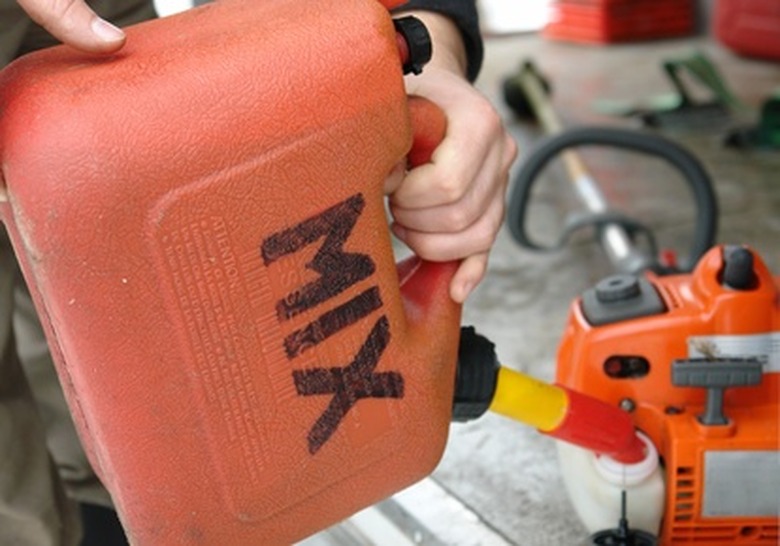How To Figure Ounces Of 2 Cycle Oil To Gasoline For Weed Eaters
Things Needed
- Gas
- Oil
- Fuel can
The invention of two-cycle engines made worrying about running out of oil while using your weed eater a thing of the past. Now you simply add your oil to the fuel can, and every time you add gas to the engine, you are adding oil. Your only concern is figuring the proper ratio of two-cycle oil to gas.
Step 1
Determine the recommended ratio of oil for your your weed eater. It should be listed on the paperwork you received when you bought the machine. Sometimes the ratio is printed on the fuel cap or on the side of the engine. It should read something like 40:1 or 50:1, depending on your model.
- The invention of two-cycle engines made worrying about running out of oil while using your weed eater a thing of the past.
Step 2
Look at your fuel can to see how much it holds. Small engines like weed eaters do not consume very much fuel, and you can mix up just one or two gallons at a time. Fill it up with regular unleaded gasoline to the one- or two-gallon mark.
Step 3
Look at the two-cycle oil bottle to see how many ounces it contains. Often it contains just enough to add to one gallon and lists what ratio it is intended for. You can do a simple calculation: If you know that one gallon is 128 oz., a ratio of 40:1 means 128 divided by 40 equals 3.2 oz. of oil.
- Look at your fuel can to see how much it holds.
- Small engines like weed eaters do not consume very much fuel, and you can mix up just one or two gallons at a time.
Step 4
Buy the new oil that has been formulated for use in engines that require anywhere from a 1:1 ratio to a 50:1 ratio of oil. According to James B. Wills, Jr., a professor at the University of Tennessee, "This is exact-mix or one mix two-cycle oil" and "a given amount of this oil (usually 2.6 oz) is mixed with one gallon of gasoline and can be used in any two-cycle engine which uses a mix ratio of 1:1 to 50:1."
